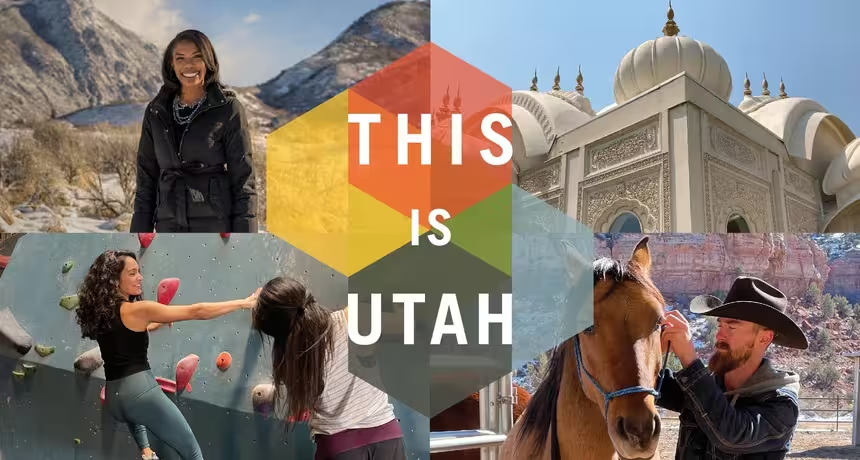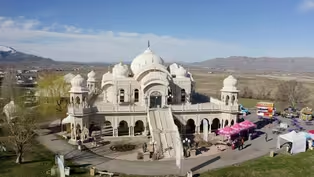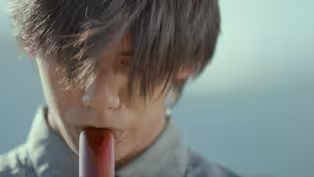
Best Friends – Save Them All
Clip: Season 4 Episode 3 | 9m 57sVideo has Closed Captions
Welcome to the sanctuary whose love and care for animals has become a national phenomenon.
Tucked into Kanab's red rock canyons in southern Utah, Best Friends Animal Sanctuary is leader of a national philosophical shift in the way communities relate to shelter pets, and it is physical home to the largest no-kill sanctuary in the nation. At Best Friends, cats, dogs, horses, pigs, birds, bunnies, and other animals find a haven, along with the chance to be adopted by a loving family.
Problems playing video? | Closed Captioning Feedback
Problems playing video? | Closed Captioning Feedback
This Is Utah is a local public television program presented by PBS Utah
Funding for This Is Utah is provided by the Willard L. Eccles Foundation and the Lawrence T. & Janet T. Dee Foundation, and the contributing members of PBS Utah.

Best Friends – Save Them All
Clip: Season 4 Episode 3 | 9m 57sVideo has Closed Captions
Tucked into Kanab's red rock canyons in southern Utah, Best Friends Animal Sanctuary is leader of a national philosophical shift in the way communities relate to shelter pets, and it is physical home to the largest no-kill sanctuary in the nation. At Best Friends, cats, dogs, horses, pigs, birds, bunnies, and other animals find a haven, along with the chance to be adopted by a loving family.
Problems playing video? | Closed Captioning Feedback
How to Watch This Is Utah
This Is Utah is available to stream on pbs.org and the free PBS App, available on iPhone, Apple TV, Android TV, Android smartphones, Amazon Fire TV, Amazon Fire Tablet, Roku, Samsung Smart TV, and Vizio.

This is Utah
Liz Adeola travels across the state discovering new and unique experiences, landmarks, cultures, and people. We are traveling around the state to tell YOUR stories. Who knows, we might be in your community next!Providing Support for PBS.org
Learn Moreabout PBS online sponsorship- When you step inside Best Friend's Animal Sanctuary you'll find cats and dogs ready for their forever homes.
Best Friends is the nation's largest sanctuary for homeless animals, and in southern Utah they find sanctuary in a place like no other.
(mellow music) - It's life changing.
It is a complete mind shift for a lot of people.
A lot of people have the same exact story that I do.
It just happened at a different time or a different point along their journey.
(mellow music continues) Like one of those life stories where the best laid plans never turn out the way they're supposed to be.
I had graduated from college.
I was on my way to the University of Virginia Law School and my friends and I decided to take a trip to Mexico.
We had just enough money to get back to Salt Lake City.
As we got to Utah, one of my friends had sponsored an animal at a place called Best Friend's Animal Sanctuary.
We pulled into this incredible, magnificent canyon.
It was breathtaking.
What was striking to me was interacting with the founders and understanding their vision of the place and understanding the no kill ethic and how it was deeper than just saving lives, it was part of a philosophy to really help save humankind.
And it had such a dramatic impact on me that right then and there I decided I wasn't going to law school, I was home.
I called my dad saying, just had this really profound experience and I'm not gonna go to law school.
I'm moving to Kanab, Utah to work at this animal sanctuary.
And he flipped out.
He and my friends and family members started to stage an intervention.
They thought it would pass.
And here I am, 26 years later.
It was a very makeshift operation.
We were living day to day.
It didn't even phase me that I was living in abject poverty because there was something bigger driving me and there was something bigger that was more important here.
(ambient nature) (serene music) - [Amy] So we brought in 1800 last year.
It was a huge success.
Of course, we want to try to have the same number adopted out or transferred out.
- As per as many difficult things as we see, we get to see so many happy things.
All the adoptions, all the fosters.
- People are terrified of white bunnies with red eyes.
So normally in shelters it's the black animals that have a hard time getting adopted.
And with bunnies, it's the white bunnies with the red eyes.
- They have really complex social organization.
They love being with each other.
They love communicating.
They communicate with each other constantly.
They love touching.
They'll snuggle up at night.
- They are good partner.
I'm also taking good care of them so that they can take good care of me.
And so, wonderful, humbling experience.
- I've seen it go from just a bunch of, you know, eccentric oddballs in myself and my colleagues shoveling sand in the desert, you know, animals coming out of our ears, to now a national, international movement that kindness to animals really builds a better world for all of us.
If you start with the weakest animals in our circle that are in greatest need, then you kind of lift everything.
- This organization was really born out of the notion that every life has intrinsic value, particularly starting with America's shelter systems, which traditionally, for the past 150 years have been killing animals as a means of population control.
The way that this whole sheltering system started in this country was, it started in New York City in the late 1800s where there was a rabies outbreak.
And the public was concerned about rabies and rightfully so, and so the city's response to that was that they put a bounty on dogs.
And so bounty hunters were paid 25 cents a head.
And they rounded up these dogs, they put 'em in a cage and dunked them in the East River.
And the public was outraged by this.
And so they said, "Look, you've gotta do something different here.
So the response from communities all over the country was to basically do the same acts just behind closed doors, which became our modern shelter system.
And this went on for decade after decade after decade, until the founders of Best Friends showed up here at the sanctuary and said, "Why are we, why are we killing our best friends?
Why aren't we trained to save them?"
And that launched the whole No-Kill Movement and changed the narrative that changed the game.
(horse snorting) (bells chiming) Anybody who's owned a pet or had a pet in their life you understand why the organization is named Best Friends.
It is the why behind what we do.
They discovered a burial of a man with a dog that dated back 200,000 years.
This is part of who we are.
(bells chiming) (light piano music) It would be ideal if every community was a sanctuary.
If your shelter is struggling with too many animals it's important for future generations to understand that you as an individual can make a huge difference.
You being positive and telling that positive narrative to encourage others and lift others up.
When you think about the founders and the fact that they had the vision and the wherewithal to actually say, "This is a way better way to not only treat our best friends but to carve out a vision for the future for an entire field that's been relating to pet over population in this way.
When I think about when I arrived, they just wanted to do right by the animals in this canyon, in this part of the world.
We didn't have this idea that the organization was gonna turn into this national and international movement and become this force for good in the way that we have.
And to see that evolve organically, it really is an unbelievable feeling.
So that, that's the exciting thing for me.
That's what gets me up every day in the morning to think about creating societal change in that way where you can actually see it happen in your lifetime.
To say you're gonna end a societal ill that's been going on for 150 years.
It's quite a remarkable thing.
What a remarkable journey.
And sometimes I think that's the gift in life, that's the jewel in life, is when you follow your intuition and your gut and you shelve the strategy and the plan and the straw man and all that stuff, and you just go with what you know is the right thing to do.
(light orchestral music)
Video has Closed Captions
Clip: S4 Ep3 | 7m 50s | The Shri Shri Radha Krishna Temple is a place of worship and an iconic landmark in Utah. (7m 50s)
Song of the Paiute Native Youth Group
Video has Closed Captions
Clip: S4 Ep3 | 6m 27s | Enjoy a cultural celebration through performances of a group of Paiute Indian Tribe youth. (6m 27s)
Utah's Heritage Highway | Preview
Preview: S4 Ep3 | 30s | Travel Utah's Heritage Highway stretching 500 miles from the northern to southern border. (30s)
Providing Support for PBS.org
Learn Moreabout PBS online sponsorshipSupport for PBS provided by:
This Is Utah is a local public television program presented by PBS Utah
Funding for This Is Utah is provided by the Willard L. Eccles Foundation and the Lawrence T. & Janet T. Dee Foundation, and the contributing members of PBS Utah.


















